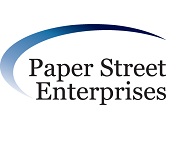Well, I knew that things could only be easy for a short amount of time :). As soon as I attempted to move my eclipse application to the cloud, I was instantly met with challenges. let me walk you through some of my attempts to make this work and the issues I encountered.
- I attempted to copy the existing application, then just overwrite the files. No luck. I ran into errors every time it attempted to display the project output. It was related to not being able to read my services.
- I went into eclipse, and set up the hana server using: https://help.hana.ondemand.com/help/frameset.htm?60ab35d9edde43a1b38cf48174a3dca2.html This ended up with the same results, but at least got me closer.
- Like everything, even this took a while to get the setting correct (mostly because my version of Java was too new)
- Once it uploaded, I could at least try it in chrome to see the errors. I thought it had to do with my proxy/simple proxy. So I did multiple changes, and kept uploading and trying again. some of errors included
- Mixed Content. I had HTTP and HTTPS (because my services are NOT HTTPS).
- Wouldn’t connect to the service, generic 401 http error.
- Invalid proxy
- and on and on…
- After some additional reading, I’m going to attempt using the cloud connector. Stay tuned to the next round of trial and error 🙂
Thanks for reading,
